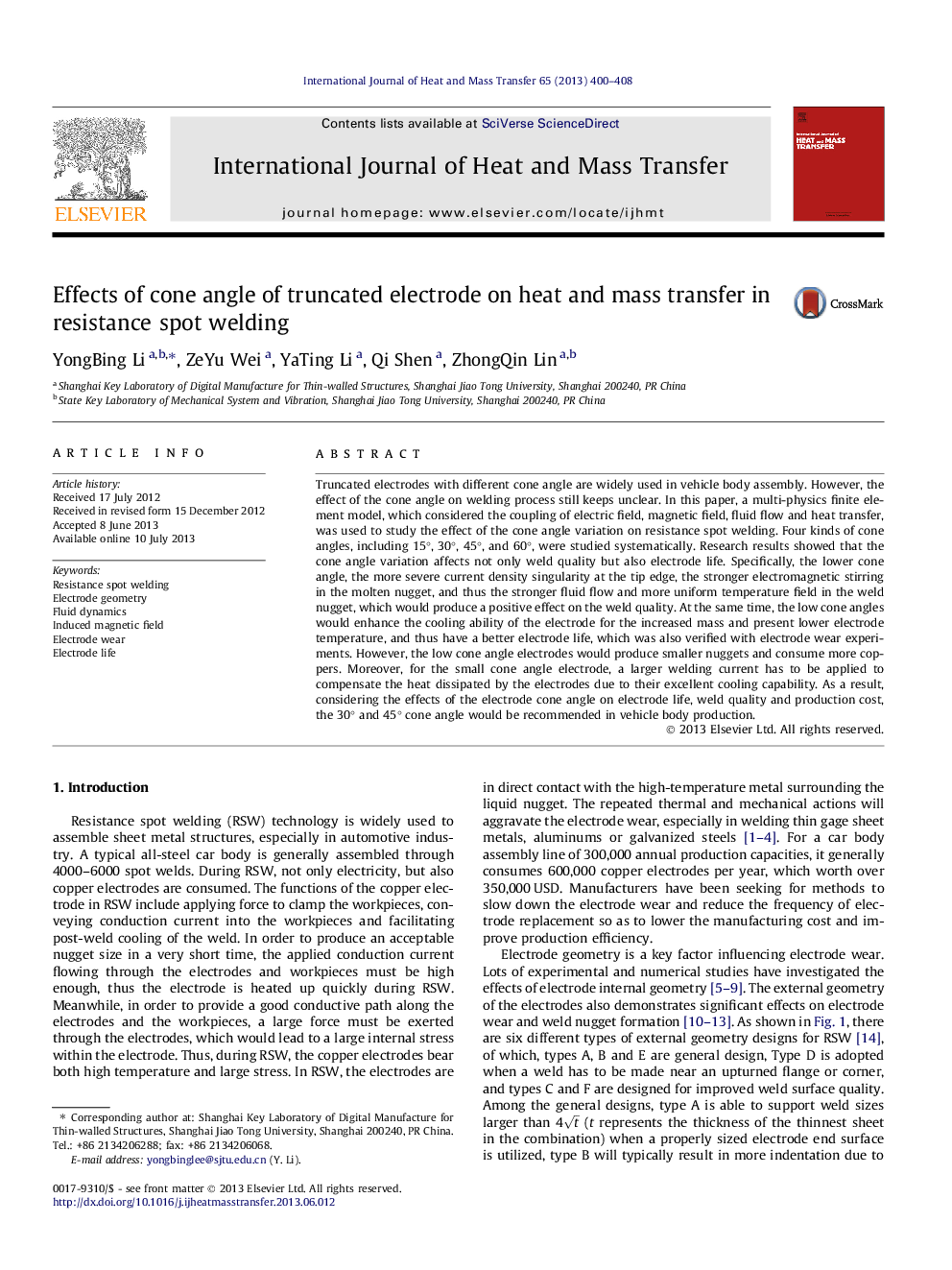| Article ID | Journal | Published Year | Pages | File Type |
|---|---|---|---|---|
| 7058551 | International Journal of Heat and Mass Transfer | 2013 | 9 Pages |
Abstract
Truncated electrodes with different cone angle are widely used in vehicle body assembly. However, the effect of the cone angle on welding process still keeps unclear. In this paper, a multi-physics finite element model, which considered the coupling of electric field, magnetic field, fluid flow and heat transfer, was used to study the effect of the cone angle variation on resistance spot welding. Four kinds of cone angles, including 15°, 30°, 45°, and 60°, were studied systematically. Research results showed that the cone angle variation affects not only weld quality but also electrode life. Specifically, the lower cone angle, the more severe current density singularity at the tip edge, the stronger electromagnetic stirring in the molten nugget, and thus the stronger fluid flow and more uniform temperature field in the weld nugget, which would produce a positive effect on the weld quality. At the same time, the low cone angles would enhance the cooling ability of the electrode for the increased mass and present lower electrode temperature, and thus have a better electrode life, which was also verified with electrode wear experiments. However, the low cone angle electrodes would produce smaller nuggets and consume more coppers. Moreover, for the small cone angle electrode, a larger welding current has to be applied to compensate the heat dissipated by the electrodes due to their excellent cooling capability. As a result, considering the effects of the electrode cone angle on electrode life, weld quality and production cost, the 30° and 45° cone angle would be recommended in vehicle body production.
Keywords
Related Topics
Physical Sciences and Engineering
Chemical Engineering
Fluid Flow and Transfer Processes
Authors
YongBing Li, ZeYu Wei, YaTing Li, Qi Shen, ZhongQin Lin,
